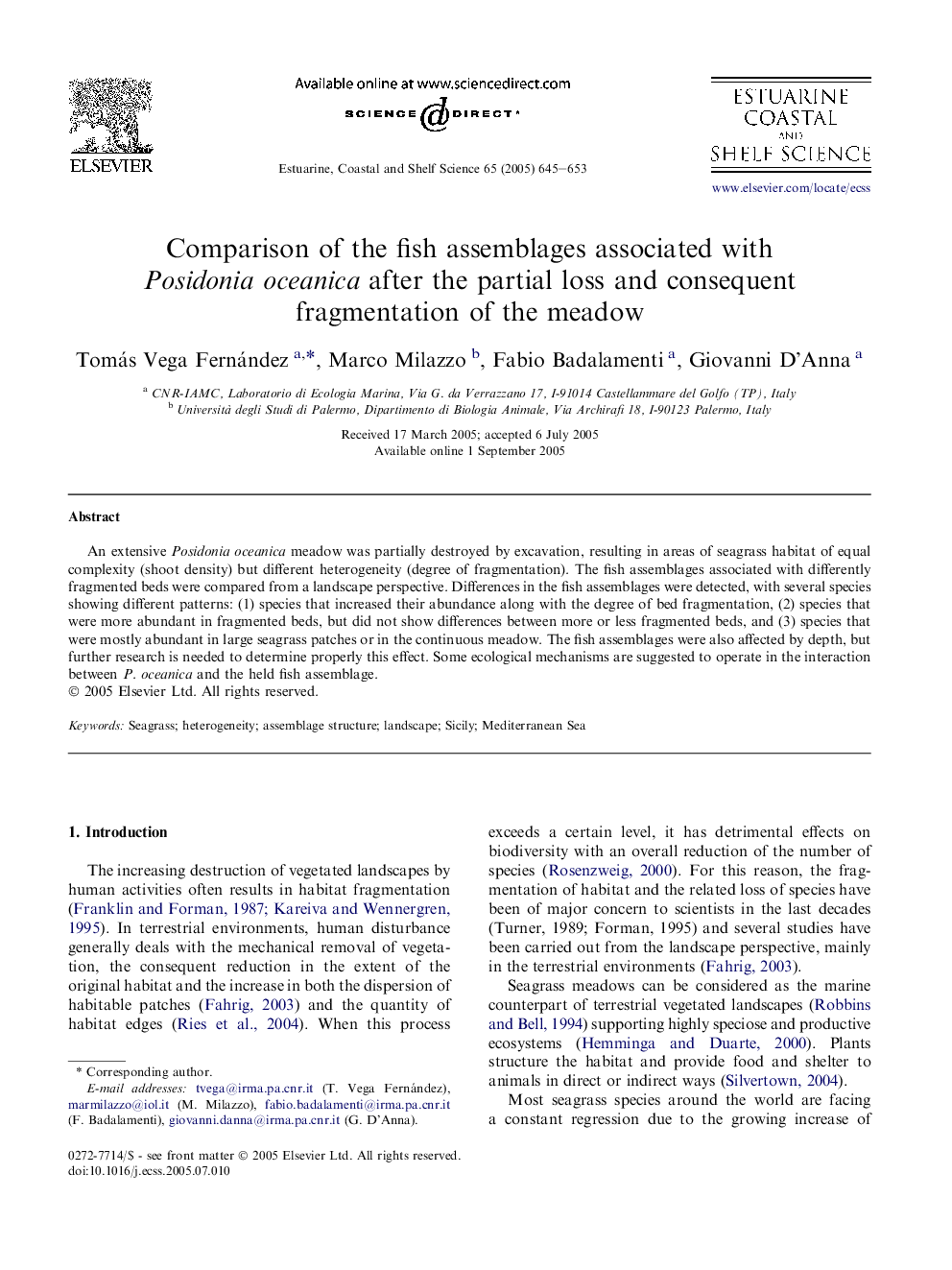| Article ID | Journal | Published Year | Pages | File Type |
|---|---|---|---|---|
| 9480635 | Estuarine, Coastal and Shelf Science | 2005 | 9 Pages |
Abstract
An extensive Posidonia oceanica meadow was partially destroyed by excavation, resulting in areas of seagrass habitat of equal complexity (shoot density) but different heterogeneity (degree of fragmentation). The fish assemblages associated with differently fragmented beds were compared from a landscape perspective. Differences in the fish assemblages were detected, with several species showing different patterns: (1) species that increased their abundance along with the degree of bed fragmentation, (2) species that were more abundant in fragmented beds, but did not show differences between more or less fragmented beds, and (3) species that were mostly abundant in large seagrass patches or in the continuous meadow. The fish assemblages were also affected by depth, but further research is needed to determine properly this effect. Some ecological mechanisms are suggested to operate in the interaction between P. oceanica and the held fish assemblage.
Related Topics
Physical Sciences and Engineering
Earth and Planetary Sciences
Geology
Authors
Tomás Vega Fernández, Marco Milazzo, Fabio Badalamenti, Giovanni D'Anna,
